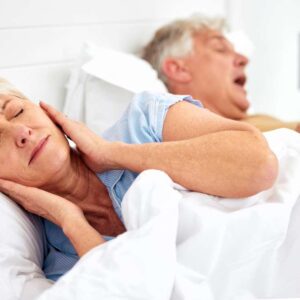
“Go Green” to SLASH Everyday Aches and Pains
If you battle an occasional ache or pain, you’re in good company.
Estimates are that at least 20 percent of adults suffer from discomfort like lower back pain from time to time. And I’m willing to bet that estimate is low… especially for older folks.
Your choices for relief are often limited to some risky or ineffective over-the-counter solution or just living with it.
But it turns out there’s an unexpected third option you’ve likely never heard of before…
This off-the-beaten-path “light trick” could be the safe and effective pain solution you’ve been searching for.
As odd as it sounds, something as simple as GREEN LIGHT could ease your most annoying aches and pains.
Volunteers were issued either clear, green, or blue-tinted glasses in a small study.
These were folks who were VERY familiar with pain as they suffered from fibromyalgia—a condition that causes chronic widespread pain, fatigue, and muscle stiffness.
Participants wore their assigned glasses for four hours daily for two weeks. And the folks who got the green glasses were the clear winners.
They were FOUR TIMES likelier to report a reduction in pain-associated anxiety. Plus, their reliance on pain pills dropped, too.
In fact, some researchers reported that some participants in the green-light group were reluctant to return the glasses at the end of the study! And honestly, who could blame them?
It’s NOT the first time we’ve seen this surprising pain-soothing effect, either.
In other studies, sitting in a dark room lit by green LED lights or wearing green-tinted glasses has reduced the severity and frequency of occasional…
- muscle pain,
- migraines, and
- aches and tenderness
One study found that headaches in folks exposed to 1 to 2 hours of green light for 10 weeks plummeted by an incredible 70 percent. And in another, patients troubled with tenderness had their aches ease around 40 to 50 percent.
Now, if you’re anything like me, you may wonder WHY this works.
Well, it turns out we’re not alone. Researchers have been puzzling over the same thing. And while we’re not entirely sure WHY the green-light therapy is so effective against pain, we DO have some clues.
For example, nerve pathways start in the eyes and end directly in relevant brain regions. And some of those regions are specifically engaged in pain and pain perception.
Exposure to green light somehow interrupts this cycle in the brain.
But that’s not all. Green light also appears to trigger melanopsin. This light-sensitive brain molecule interacts with brain cells, reducing our PERCEPTION of discomfort.
Before you try this pain relief solution at home, you should know that not any old green light will do. Light of a specific wavelength is required.
Lower and higher wavelengths towards the ends of the green spectrum work best.
It’s unlikely that you own an expensive spectrophotometer to determine if a product produces light within the right area of the spectrum. So, there’s no way to guarantee that any green light or pair of green-tinted glasses you buy IS the correct wavelength.
Your best bet is to research products specifically designed to ease occasional pain. Then, read lots of reviews and make sure the manufacturer has a good reputation.
P.S. Alzheimer’s: “Light” at the end of the tunnel?
Source:
Nelli A, et al “Effects of light induced analgesia on anxiety for fibromyalgia patients” ASA 22, New Orleans.
Written By Dr. Scott Olson, ND
Nearly 25 years ago, failed mainstream medical treatments left Dr. Olson in constant pain – and his health in ruins. And that’s when he did something REVOLUTIONARY. He began his career in medicine – and dedicated his life to uncovering the true, underlying causes of disease.
Through his innovative medical practices in Tennessee and Colorado, Dr. Olson has helped cure countless seniors from across America of arthritis… heart disease… diabetes… and even cancer. All without risky prescription drugs or painful surgeries.
View More Free Articles
Stop Obsessing Over Diet Trends
Can we stop with the endless diet debates already? Every other week there’s a new headline shouting about which diet is best for weight loss, heart health, or diabetes. Paleo, keto, low-carb, high-protein… it’s exhausting. And now, a new meta-analysis is out comparing the Mediterranean diet, the DASH diet, and something called AHEI (that’s “Alternative...
A New Reason to Ditch Processed Junk
If you’ve ever walked the inside aisles of your local grocery store and thought, “This is all just junk,” your instincts were spot on. A new study published in the journal Thorax just added another red flag to the list of dangers linked to ultra-processed food—a 41 percent higher risk of lung cancer. That’s right....
When Being Winded on Stairs Is Serious (And When It Isn’t)
I had an athlete visit me recently because he experienced shortness of breath while climbing stairs. He is in great shape, so he was worried about what it might mean. “Doc,” he said, “I run five miles three times a week. Why am I huffing and puffing after two flights of stairs?” His concern is...
Study EXPOSES Hidden Danger Lurking in Your Car
We think of our homes and cars as safe havens. But according to a startling new study, they may be flooding your lungs with microscopic plastic particles—every single day. Researchers in France recently found that adults inhale an average of 68,000 microplastic particles daily from indoor air alone. To put that in perspective, that’s about...
Mailbag: Is Modern Food Making You Snore?
“What can cause snoring, and is there a way to correct this issue?” —Seeking Silence Hi Seeking, Snoring happens when the soft tissues in your throat relax and vibrate as air passes through during sleep. While several factors can cause snoring—from sleep position to nasal congestion—I want to share one trigger that might surprise you....
Simple Food Swap SLASHES Dementia Risk 28%
Let’s be honest… who would jump at the chance to cut their dementia risk by 28 percent. And no, you don’t need to run marathons, survive on broccoli, or learn to play the zither (whatever that is) to make it happen. All it takes is one easy swap—something that’s probably already in your refrigerator. Researchers...
This SMART Floss Exposes Hidden Health Danger
Scientists have created dental floss that doesn’t just clean between your teeth—it also tracks your stress while you’re flossing. Now, I know what you’re thinking… “Great—now even flossing is going to stress me out by telling me how stressed I am.” But this fascinating new tool from Tufts University could be a game-changer for understanding...
Is This "Safe" Sweetener Damaging Your Brain?
The headlines are alarming… “Popular Sugar Substitute Linked to Brain Cell Damage” and “Erythritol Could Damage Critical Brain Barrier” are just two of the dozens I’ve spotted recently. But before you toss every sugar-free product in your pantry, let’s take a closer look at what this study actually shows—and what it doesn’t. The latest research...
This Summer Threat Could SPIKE Your Blood Sugar
Picture this… It’s another scorching hot summer day. You crank up the air conditioning while watching the weather forecast, which predicts yet another “record-breaking” heat wave. It’s starting to feel like just another miserably uncomfortable summer. But what you might not realize is that—if you have diabetes—those rising temps could do far more damage to...
Move Over Yogurt—5 Foods That Pack MORE Probiotics
Let’s talk about your gut. The microbiome is the collection of trillions of bacteria and other tiny organisms that live in and on your body—especially in your gut—and help keep you healthy. I’ve written often about how vital it is to maintain a healthy microbiome. And you might have dutifully added yogurt to your shopping...









